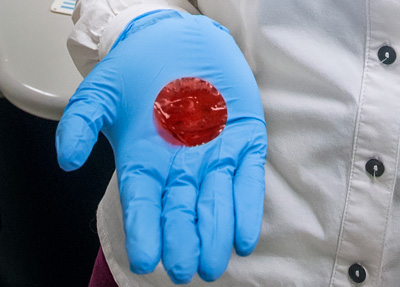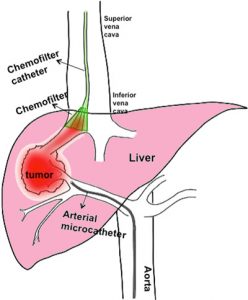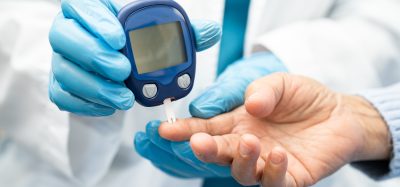ChemoFilter – the sponge designed to soak up cancer drugs
Posted: 7 June 2016 | Victoria White, Digital Content Producer | No comments yet
Berkeley Lab researchers are helping to develop and test materials for a new drug-capture system that could limit the harmful side effects of cancer drugs…


A view of a sample of a polymer-based membrane material created at Berkeley Lab. The material, which originally had a light-yellow hue, turned red after soaking up a chemotherapy drug. CREDIT: Roy Kaltschmidt/Berkeley Lab
Researchers at the US Department of Energy’s Lawrence Berkeley National Laboratory (Berkeley Lab) are helping to develop and test materials for a new drug-capture system that could limit the potentially harmful side effects of cancer drugs.
The researchers say the system could also potentially be applied to antibiotic treatments in combating dangerous bacterial infections.
X. Chelsea Chen, a postdoctoral researcher working in the Soft Matter Electron Microscopy programme in Berkeley Lab’s Materials Sciences Division, had been investigating polymer membranes – which help current to flow in a fuel cell that converts hydrogen and oxygen into electricity – when she learned about the concept for this new type of medical device.
She saw that the proposed drug-capture device could benefit from the same property in the fuel cell material, which allows it to attract and capture certain molecules by their electric charge while allowing other types of molecules to flow through.
Chen commented: “I was really excited when I found out this could be used for chemotherapy — this was branching out in a totally different direction.”
Certain types of chemotherapy drugs, such as doxorubicin, which is used to treat liver cancer, have a positive charge, so the polymer material attracts and binds the drug molecules. “In our lab experiments, the current design can absorb 90 percent of the drug in 25-30 minutes,” Chen said.
That is important, since an increasingly popular liver-cancer treatment, known as TACE, can allow up to half of the chemotherapy dose to reach the rest of the body even though it is intended to reduce its circulation.
“Doxorubicin has been around for decades. It is very well understood, and it is also very toxic,” said Steven Hetts, an associate professor of radiology at UC San Francisco and an interventional neuroradiologist at the UCSF Medical Center who conceived of the new treatment system, called ChemoFilter. “If you get exposed to too much, when it goes through the heart you can go into heart failure.”
Escalating doses without side effects
Hetts specialises in treating eye tumours by navigating a catheter from the femoral artery in the thigh to the opthalmic artery that supplies blood to the affected eye, and pumping chemotherapy medication through the catheter to the tumour.
“You can get very high concentrations of that chemotherapy in the eye and relatively low concentrations in the rest of the body, but some will wash through the eye and into the veins in the head,” Hetts said, “so you can have side effects from that.”
Hetts began to question if there was a way to remove the excess drug before it has side effects. He said: “If you can remove a lot of the drug, you could escalate the dose of the drug you can give, for better tumour control and potentially a cure – and you could basically eliminate any side effects.
“It occurred to me that maybe we could navigate a separate catheter into the vein that drains the blood, and have a material that binds up any excess chemotherapy.”
While the eye cancers he treats are rare he saw a parallel need to improve the treatment options for liver cancer, which is far more pervasive.
ChemoFilter reduced the peak concentration of doxorubicin by 85%
In 2013 his staff reached out to Nitash Balsara, a senior scientist at Berkeley Lab, to pursue the idea, and Chen began to work on materials based on Hetts’ concept. The research team received a patent for a ChemoFilter system in April.


A ChemoFilter device (green) is inserted into a large vein to intercept a chemotherapy drug before it reaches the heart. The drug is delivered to a cancerous tumour in the liver by a tiny tube (middle and bottom) inserted in an artery. CREDIT: Berkeley Lab
The patented device features a nickel-titanium metal frame in a collapsible flower-petal array, attached to a thin polymer membrane that can be expanded out from a catheter to absorb a drug. In a preclinical study, a ChemoFilter device was inserted into a pig and was found to reduce the peak concentration of the chemotherapy drug doxorubicin by about 85 percent.
The device will hopefully find use in human cancer treatment within a couple of years, Hetts said.
Chen and other researchers are also working on next-generation ChemoFilter devices that use a different mix of materials and different methods to remove drugs from the body, though those will likely take longer to receive federal approval for use.
Related topics
Drug Delivery
Related organisations
Lawrence Berkeley National Laboratory








